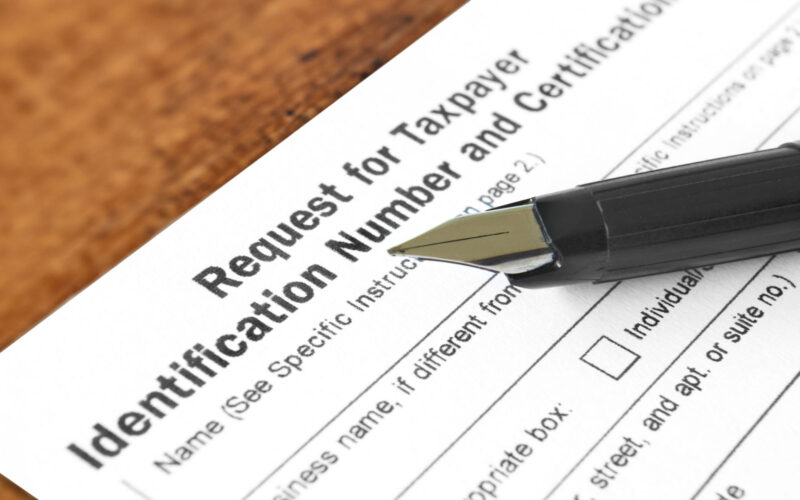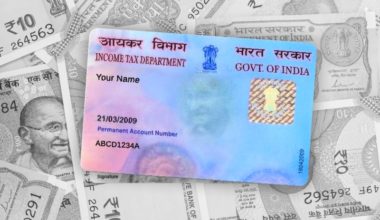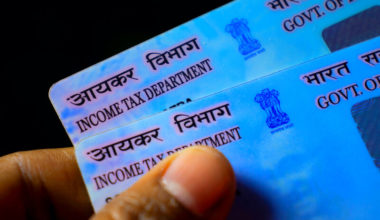TIN is a unique identification code assigned to individuals and businesses by the government. It helps to track and identify taxpayers, ensuring proper tax compliance. In this article, we will explore what TIN is all about, why it is important, and how it is used.
Table of content
- What is TIN?
- Why is TIN Important?
- How to Apply for Tax Identification Number (TIN) Online?
- Document Required for TIN Application
- How to Know the TIN Application Status?
- How to Search for TIN Number?
- What is the Format of TIN Number?
- List of State Codes for First Two Digits of Tax Identification Number in India
- Difference Between GSTIN and TIN
What is TIN?
A Taxpayer Identification Number (TIN), also known as a TIN number, is a special 11-digit number given to businesses. It helps keep track of their transactions within and between different states. The last two digits of the TIN show the state where the business is based, while the other nine digits are assigned by the state government. Having this 11-digit number proves that a company is legitimate.
The purpose of the TIN system is to create a central database that collects tax-related information for businesses operating in multiple states. This system helps the Income Tax Department ensure transparency and simplifies the monitoring of transactions.
Read More: How to Get Instant e-PAN in 10 Minutes?
Why is TIN Important?
The Significance of a Tax Identification Number (TIN):
- TIN (Taxpayer Identification Number) is like an ID number for businesses.
- It helps businesses keep track of their transactions and records.
- TIN allows businesses to combine tax information from different states.
- It makes it easier for the government to check and verify financial transactions.
- TIN helps prevent tax fraud and ensures fairness in taxes.
- It simplifies tax administration and helps identify tax-related issues.
How to Apply for Taxpayer Identification Number (TIN) Online?
Step 1: Visit the official website of the VAT portal or Commercial Tax Department in your state. (The TIN number is a part of the VAT, so you can find it on your VAT certificate.)

Step 2: Complete the registration process on the VAT portal by filling out the registration form with all the required information. (Remember, each state has its VAT website, so it’s important to check your respective state’s VAT website for accurate information.)
Step 3: Upload the necessary documents such as identification proof, address proof, business registration documents, and any other supporting documents as specified.
Step 4: Submit the registration form and supporting documents through the online portal.
Step 5: The Commercial Tax Department will carefully review and verify the submitted form and documents.
Step 6: Once your registration is approved, the tax authority will generate your Tax Identification Number (TIN) and provide you with a provisional certification for your business.
Step 7: A VAT inspector employed by the state government will visit your business address for final verification.
Alternatively, if you are looking for TIN facilitation centres, you can easily find them through the NSDL website. Here are the steps to follow:
Step 1: Visit the official TIN website and locate the ‘Facilitation Centre’ option in the menu.

Step 2: Click on ‘Search TIN FC’ and either enter your city’s PIN code or search for the facilitation centers based on the state or city.

Step 3: Once you have entered the relevant information, a list of TIN facilitation center representatives and their key details will be displayed.

Step 4: You can simply visit the facilitation centre that is convenient for you and obtain your Taxpayer Identification Number (TIN) from them.
Read more: UPI and BHIM: Which One is Better?
Document Required for TIN Application
The documents required for TIN applications can vary from state to state, as the issuance of TIN is governed by state governments. However, certain common documents are typically requested, including:
- Proof of identity.
- PAN card of the proprietor.
- Address verification.
- Address verification of the business enterprise.
- Passport-sized photographs of the proprietor.
- References or security documents.
- Certificate of incorporation for business entities.
- Memorandum of association and articles of association for companies registered under the Companies Act.
*Note that the exact documents might vary depending on your state’s regulations.
Read: What is the Difference Between PAN, TAN, TIN?
How to Know the TIN Application Status?
Online Status Check:
You can verify your TIN application status online after 2-3 days of applying.
Step 1: Visit the official NSDL status tracking website: https://tin.tin.nsdl.com/pantan/StatusTrack.html
Step 2: Enter your 15-digit acknowledgement number.
Step 3: Choose the application type on the portal.
Step 4: Your TIN status will be displayed on the screen
Note: Usually, you will receive the acknowledgement number within 3 days of applying.
Know: How to Apply for an NSDL PAN Card
Phone and SMS Verification:
- Alternatively, you can verify your TIN application status by calling 020-27218080.
- You can also check your status by texting ‘NSDLPAN’ along with your acknowledgement number to 57575.
How to Search for TIN Number?
After the Commercial Tax Department of the state assigns a TIN (Taxpayer Identification Number), dealers and businesses can start selling goods. These businesses must include the TIN on their invoices and share it with the seller.
To verify the authenticity of dealers or companies, individuals can check their TIN numbers on the official website of the Commercial Tax Department in the state where the dealer is registered. This online verification process allows individuals to confirm the details of dealers or companies before doing business with them.
To verify a TIN number, follow these steps:
Step 1: Visit the official website of the Commercial Tax Department in your state.
Step 2: Look for the ‘Dealer search’ option.
Step 3: Enter the TIN number of the dealer.
Sstep 4: Click on the ‘Search’ button.
These results will provide important information about the company, including details such as the business name, license status, address, and PAN (Permanent Account Number) to ensure the company’s authenticity before engaging in any business transaction.
What is the Format of TIN Number?
The TIN number typically follows a format of 11 characters. The first 9 characters are assigned by the government, while the last 2 characters indicate the state of the applicant. This means that the government provides the initial portion of the TIN, and the remaining characters help identify the state associated with the TIN.
List of State Codes for First Two Digits of Tax Identification Number in India
Below is a tabular representation of the State Codes used for Tax Payers’ Identification Numbers (TIN) across various states and union territories in India:
| Name of State or Union Territory | Type | State Code for VAT TIN no. | Vehicle Series First Two Characters | State Capital |
|---|---|---|---|---|
| Jammu and Kashmir | STATE | 01 | JK | Srinagar / Jammu |
| Himachal Pradesh | STATE | 02 | HP | Shimla |
| Punjab | STATE | 03 | PB | Chandigarh |
| Chandigarh | UT | 04 | CH | Chandigarh |
| Uttarakhand | STATE | 05 | UA | Dehradun |
| Haryana | STATE | 06 | HR | Chandigarh |
| Delhi | UT | 07 | DL | Delhi |
| Rajasthan | STATE | 08 | RJ | Jaipur |
| Uttar Pradesh | STATE | 09 | UP | Lucknow |
| Bihar | STATE | 10 | BR | Patna |
| Sikkim | STATE | 11 | SK | Gangtok |
| Arunachal Pradesh | STATE | 12 | AR | Itanagar |
| Nagaland | STATE | 13 | NL | Kohima |
| Manipur | STATE | 14 | MN | Imphal |
| Mizoram | STATE | 15 | MZ | Aizawl |
| Tripura | STATE | 16 | TR | Agartala |
| Meghalaya | STATE | 17 | ML | Shillong |
| Assam | STATE | 18 | AS | Dispur |
| West Bengal | STATE | 19 | WB | Kolkata |
| Jharkhand | STATE | 20 | JH | Ranchi |
| Orissa | STATE | 21 | OR | Bhubaneswar |
| Chhattisgarh | STATE | 22 | CG | Raipur |
| Madhya Pradesh | STATE | 23 | MP | Bhopal |
| Gujarat | STATE | 24 | GJ | Gandhinagar |
| Daman and Diu | UT | 25 | DD | Daman |
| Dadra and Nagar Haveli | UT | 26 | DN | Silvassa |
| Maharashtra | STATE | 27 | MH | Mumbai |
| Andhra Pradesh | STATE | 28 | AP | Hyderabad |
| Karnataka | STATE | 29 | KA | Bangalore |
| Goa | STATE | 30 | GA | Panaji |
| Lakshadweep | UT | 31 | LD | Kavaratti |
| Kerala | STATE | 32 | KL | Thiruvananthapuram |
| Tamil Nadu | STATE | 33 | TN | Chennai |
| Puducherry | UT | 34 | PY | Puducherry |
| Andaman and Nicobar Islands | UT | 35 | AN | Port Blair |
Difference Between GSTIN and TIN
| Aspect | GSTIN | TIN |
| Expansion | Goods & Service Tax Identification Number | Tax Identification Number |
| Meaning | Unique alpha-numeric no. for dealers & service providers | Unique number for VAT-applicable businesses |
| Issued by | GST Department | Commercial Tax Department |
| No. of digits | 15 digits | 11 digits |
| When to obtain | Required for all taxpayers under GST | Varies by state for VAT businesses |
| Form to use | GST REG-01 for registration | State-specific forms |
| Where to apply | GST portal (www.gst.gov.in) | State’s Sales Tax website or Tax Office |
| Mode of applying | Online | Both online and offline |
| Documents required | PAN, address proof, business proof, bank details, etc. | Varies by state, includes ID, address, PAN, business |
| Penalty | Non-compliance attracts GST penalty | State-specific penalties apply |
| How many can a person hold | Multiple GSTINs as needed | Typically one TIN per VAT registration |
Note: GSTIN and TIN are both identification numbers used for taxation purposes. However, they are used in different taxation systems and have different procedures and rules for issuance.
Like PAN, TIN also plays a vital role in making a business entity trustworthy to customers and the government. Since no business can continue its operations without a TIN number, business owners must get this number on the invoices that they raise and apply for one if they do not have one yet. It will bring more transparency and help a business to establish itself successfully.
Disclaimer
This blog is written to make it easy for readers to understand complicated processes. Some information and screenshots may be outdated as government processes can change anytime without notification. However, we try our best to keep our blogs updated and relevant.










